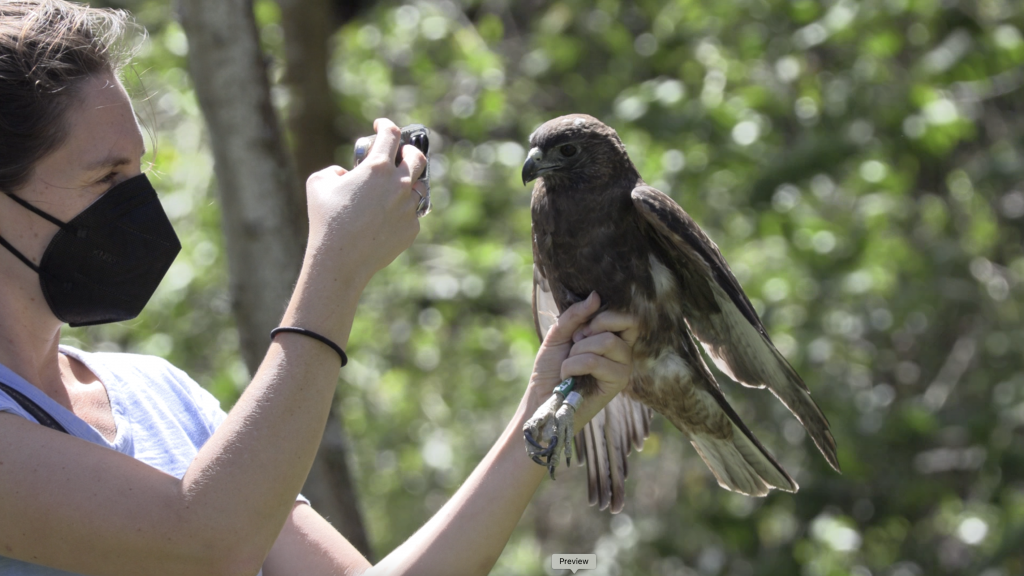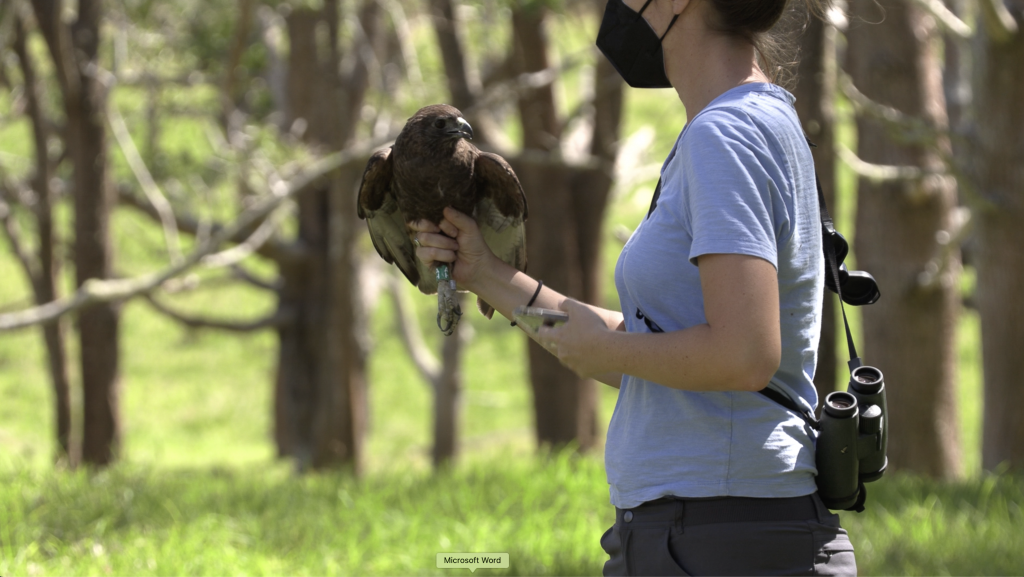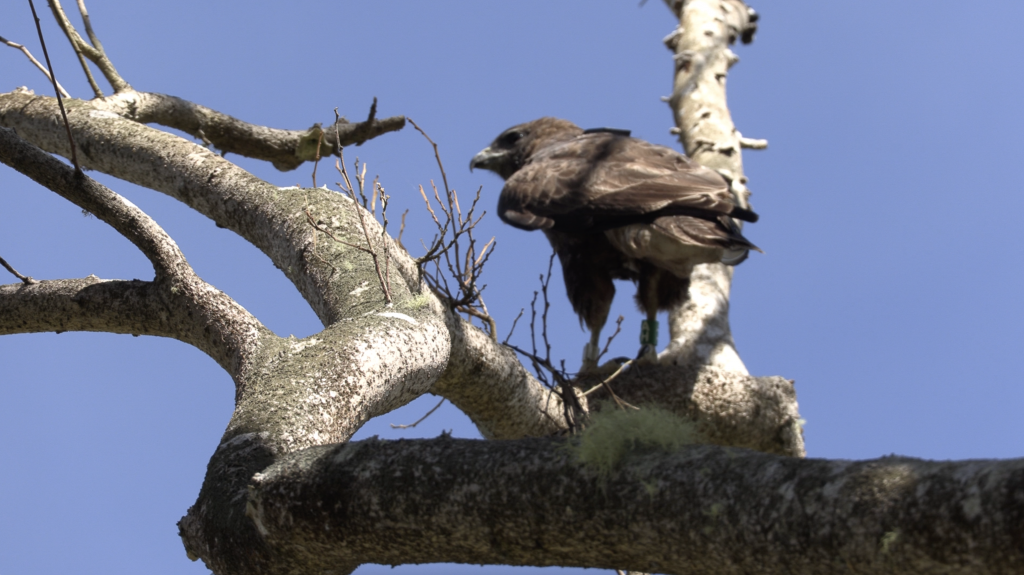Hawaiian hawk’s behaviors, range being researched on Hawaiʻi Island
The Hawai’i State Division of Forestry and Wildlife and the San Diego Zoo Wildlife Alliance are conducting simultaneous research on the Big Island to study the range and behaviors of the ‘io, also known as the Hawaiian hawk.
The ‘io is one of two raptors native to Hawai‘i. The other is Pueo, the Hawaiian short-eared owl.
Earlier this month, state wildlife crews ventured into the Ka‘u Forest Reserve to attract, trap and band ‘io.
“Once we get to a location we think is good ‘io habitat, we begin playing back ‘io calls to attract birds,” said Kate Maley in a department news release.
The screech of an ‘io sounds through the canopy for eight minutes while Maley and coworker Bri Bishop scan the sky. When they don’t spot a bird in that time frame, they move onto another location and try again.
At the third spot on this particular day, an ‘io flew into the area to investigate shortly after the pair played calls. They prepared a cylinder-shaped wire trap, with a lure inside, and within minutes the bird swooped down thinking it was in for an easy meal. Instead, the bird was trapped by its talons and several hours of processing began.
Officials with the Department of Land and Natural Resources say the adult female is the seventh bird captured since the study began last fall. The San Diego Zoo Wildlife Alliance research in the Pu‘u Maka‘ala Natural Area Reserve has resulted in six birds caught, banded and now tracked.
A species recovery project, aimed at reintroducing ʻalalā (Hawaiian crow) back into the wild, failed, with ‘io shouldering some of the blame. It’s believed the hawks attacked numerous crows and the remaining ‘alala were subsequently recaptured.
Department officials say plans are underway now to try again on Maui, where there are no ‘io. The current research is expected to provide invaluable data for another ʻalalā introduction project on Hawai‘i Island in the future.
“So far, we’ve gotten some cool data that show ‘io using the habitat on the edge of the Kaʻū Forest Reserve and in the pastures,” Maley said. “They seem to be using this edge habitat, moving into the forest sometimes, sometimes hanging out in the pastures and sometimes flying all the way to coffee plantations around Pāhala.”
Much of the team’s time with bird-in-hand is spent attaching a tiny GPS tag to its back. The tags use cellular tracking technology, so that researchers can pinpoint each ‘io’s location at any given point in time.
“That’s one thing that’s cool about the work we’re doing here,” Maley said. “Eventually it’s hoped ʻalalā will be released again and knowing where the ‘io are spending their time and how they’re utilizing the landscape will help identify places where there’s not much ‘io presence.
“Between what we’re doing, what the zoo wildlife alliance is doing, and past efforts by the U.S. Geological Survey, we’re going to develop a really impressive data set.”













